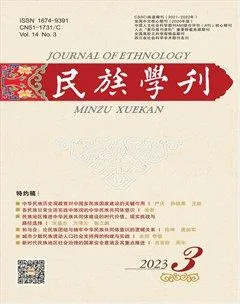Core Issues in the Philological Study of Ethnic Literary Integration History in Ancient Southwest China
2023-07-31SunJiwen
Sun Jiwen
DOI:10.3969/j.issn.1674-9391.2023.3.008
Abstract:
To fully understand the literary integration of various ethnic groups in ancient southwest China, it is necessary to study the historical materials of literary integration of various ethnic groups in ancient southwest China. Meanwhile, sorting out and studying these historical materials must be based on historical facts of literary integration of various ethnic groups in this area and be conducted in chronological order. According to the types of documents, they could be divided into different catalogues such as historical materials concerning the integration of literary works, the integration of literary theories, the integration of literary activities, and the integration of oral literature.
The core issues in the philological study of ethnic literary integration history in ancient southwest China basically involve three aspects:1) the basis of philology, and the new framework of historical materials compilation;2) the study of written and oral literary documents, digitalized storage of documents, and the study of digital documents; and 3) the approaches to proceed the historical documents and the academic stance. The basis of philological study on ethnic literary integration history in ancient southwest China is mainly manifested in two aspects: one is the original documents concerning literary integration in history, and the other is the historical data collected and sorted out by the academic circle. Based on the research basis mentioned above, and learning from former scho-lars compilation experience, the forthcoming book entitled A Collection of Literary Integration of Ethnic Groups in Ancient Southwest China could consist of three parts such as historical documents from the pre-Qin period to the Yuan Dynasty, historical documents in the Ming Dynasty, and historical documents in the Qing Dynasty.
The bibliographic study of these historical materials involves having a deep understanding not only from a historical perspective, but also from a literary, cultural, and regional perspective, aiming to explain the chronology, spatial field, and the pivotal role of key figures in the literary integration of various ethnic groups. This may help grasp the three-dimensional structure of literary integration among various ethnic groups in Southwest China and meticulously restore the scenes of literary history. On the basis of borrowing relevant literature collation strategies in the academic community, this study adopts an approach of “collection-editing-research-application”, and built on collecting and compiling these documents, combining with research projects on literature, culture, and digital humanities, it strives for holistic progress via pairing collecting with researching, theorizing, and developing applications.
Pursuing academic advancement, innovation and development are involved, demonstrating a passion for ethnic literature in ancient China as well as a historical mission of the time. Therefore, the academic rigor of documentary research should be raised, and historical documentation concerning literary integration should be regarded as an important part of the literary, cultural, and ideological heritage shared by all ethnic peoples. Research concerning different fields such as literary styles, schools, atmospheres, artistic vision, and family-clan literature of ethnic groups should be further explored, potentially leading to new academic views to enrich bibliographical study of literature. Moreover, this study maintains that the Marxist view on literature and art should be adhered to; the meaning of historical documents concerning literary integration and contemporary academic studies should be connected, hopefully adding a new chapter to the discourse system of ethnic literature research.
Key Words:
ethnic literature;literary integration;historical compilation;digital humanities;core issues
杂志排行
民族学刊的其它文章
- 中华民族历史观教育对中国多民族国家建设的关键作用
- On the Building and Practice of a Social Support Network for the Urban Ethnic Minority Floating Population: A Case Study of “Ethnic Homes” in Guangzhou
- The Early Practice and Cultural Construction of Visual Ethnodanceology
- A Study on the Formation Mechanism and Evolution Trend of Red Revolutionary Tourism Symbiosis Atlas in Sichuan Province
- A Development Model for the Homestay Industry in Qiang Areas Against the Background of Rural Revitalization:Based on a Survey in Wenchuan County, Aba Prefecture
- “Multi-level Collaborative Governance” in Ethnic Areas:Structural Features and Internal Logic
